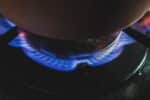UPDATE: The table below contains historical RRO rates from Natural Gas. The RRO is now named ROLR – click here to better understand the update.

From 2021-2024, natural gas prices in Alberta went through several swings. If we examine the historical natural gas prices between 2021 and 2022, we can see that the price skyrocketed to as much as approximately $5.3/GJ in November 2021 (see the bottom of this post for tables comparing historical regulated natural gas rates for 2020-2022). Previously, the average price for 2020-first half of 2021 hovered around $1.55-$3.00/GJ. The following year, the price reached $6.53/GJ in June 2022. In 2023, the natural gas price trended downwards. According to the Alberta government, the lowest price seen was $0.64/GJ in July 2024. As of September 2024, the average price for fixed-rate plans is $4.713/GJ. Floating rate plans on average cost $3.913/GJ, and the regulated rate averaged $0.843/GJ.
You may be wondering what factors impact natural gas rates in Alberta. The answer is there are many market drivers for natural gas. We’ll take a closer look at the points below.
Please note, that the following list is not in a specific order.
1. Higher Oil and Gas Demand
An increase in demand for Canadian natural gas exports has been one such factor behind the increases in natural gas. As the economic activity across the globe picks up, the need for natural gas also increases fast. Overall, the main driver of gas has been the European gas crisis. In particular, the war in Ukraine has played an additional role in increasing oil and natural gas demand. According to a Global News article, Russia is a critical supplier of natural gas in Europe and oil in global markets. Hence, an increased price of oil and natural gas.
As Russia reduces the volume of gas heading into Europe, the United States is exporting large volumes of LNG to Europe. Consequently, Canada is exporting more gas down south to the US.
2. Extreme Winter Weather
Due to the deep freeze in late December 2022 and early January 2023, heating was used more frequently and extensively in addition to increased electricity demand. During cold snaps, the average home uses 40% more natural gas and 8% more electricity for every 10°C drops below zero. A cold snap in early January 2024 also marked increases in natural gas and electricity usage.
Alberta hit an all-time electricity usage record of 11,939 MW on January 3rd, 2022 due to a cold snap that lasted for about a month (December 2021 – January 2022). The province also broke its summer record for electricity demand (11,414 MW on June 28, 2021) due to a heatwave in Western Canada. On January 11, 2024, a new record for hourly peak demand was set at 12,384 MW.
Additionally, a colder and longer-than-expected winter in Eastern Canada and the United States in 2022 also resulted in above-average demand for natural gas, further increasing Alberta’s exports of natural gas.
While improved storage levels of natural gas storage can help with natural gas futures, they aren’t enough to put a ceiling on natural gas price surges, according to a CBC news article.
On the flip side, milder winter weather is a contributing factor to lower natural gas prices. Heating usage declines, which helps alleviate pressure on the provincial natural gas supply.
3. Carbon Tax [no longer applicable]
*Update: On March 15, 2025, the Canadian Federal Government announced changes to the consumer carbon tax. Effective April 1, 2025, the carbon tax will be set to $0. This means that after March 31, 2025, the carbon tax will no longer be applied to natural gas usage.
Customers will still see carbon tax charges for usage incurred up to and including March 31, 2025. For usage periods after March 31, 2025, the line-item Carbon Tax will read $0.00. Eligible Canadians will receive a final Canada Carbon Rebate payment starting April 22, 2025.
To learn more about the change to Canada’s carbon tax, click here for our detailed guide.
4. Wrong Bill Estimates
If for whatever reason wire service providers are unable to read your natural gas meters, they will estimate your consumption based on your historical usage in previous months. However, many consumers, especially those who consume large amounts of natural gas, have noted that their natural gas estimates are incorrect.
Here are a few steps consumers can take if they believe their natural gas estimates are off:
- Check your in-house numbers to what your meters are reading – make sure to take note of any new appliances as well as making sure your meters are accessible.
- Contact your utility provider about your concerns or file a complaint with Measurement Canada. However, note that if your meter is determined to be working, your utility provider may require you to pay a testing fee.
- Some providers such as EPCOR or Enmax Power allow customers to provide meter readings online – you can see a list of providers that allow online reading here.
Will the natural gas price cap protect my natural gas bills from rising this winter?
In the 2022 Alberta provincial budget, it was announced that there would be natural gas consumer price protection for consumers using less than 2500 GJ annually. Eligible consumers will receive automatic rebates if the regulated monthly natural gas rate charged by one of the province’s regulated utility providers goes above $6.50/GJ.
However, it’s difficult to forecast if this price protection will be effective in the coming years. Based on 2021, natural gas market prices peaked at $4.87/GJ, while the highest regulated rate price (RRO – now ROLR) recorded was $6.426/GJ In January 2023.
A week later, the provincial government also announced an electricity rebate.
Which natural gas plan should I choose?
The answer to this question depends on your financial preferences. If you are looking to avoid market volatility, then a fixed natural gas plan is an ideal option. Your monthly natural gas bill will be more predictable, which can help you manage your budget. When market prices are low, a variable natural gas rate is advantageous; you could end up paying less than those on a fixed-rate plan. However, price spikes can suddenly occur, which typically occur during the winter. Regulated natural gas rates are also advantageous when market conditions are favourable. But just like variable plans, regulated natural gas rates can fluctuate according to various factors.
The following tables list the historical averages for the regulated natural gas rate in Alberta.
Natural Gas Regulated Rate Averages in Alberta: Tables
| Date (Month-Year) | Regulated Rate |
| January 2025 | $1.96/GJ |
| February 2025 | $1.81/GJ |
| March 2025 | $2.43/GJ |
| April 2025 | $2.195/GJ |
| May 2025 | $1.71/GJ |
| June 2025 | $2.691/GJ |
| July 2025 | $1.097/GJ |
| Date (Month-Year) | Regulated Rate |
| January 2024 | $2.113/GJ |
| February 2024 | $4.308/GJ |
| March 2024 | $1.77/GJ |
| April 2024 | $1.949/GJ |
| May 2024 | $1.596/GJ |
| June 2024 | $1.15/GJ |
| July 2024 | $0.644/GJ |
| August 2024 | $1.335/GJ |
| September 2024 | $0.843/GJ |
| October 2024 | $0.672/GJ |
| November 2024 | $1.877/GJ |
| December 2024 | $2.022/GJ |
| Date (Month-Year) | Regulated Rate |
| January 2023 | $6.426/GJ |
| February 2023 | $3.446/GJ |
| March 2023 | $2.536/GJ |
| April 2023 | $3.569/GJ |
| May 2023 | $2.249/GJ |
| June 2023 | $3.363/GJ |
| July 2023 | $2.44/GJ |
| August 2023 | $3.215/GJ |
| September 2023 | $2.849/GJ |
| October 2023 | $2.495/GJ |
| November 2023 | $2.784/GJ |
| December 2023 | $2.826/GJ |
| Date (Month-Year) | Regulated Rate |
| January 2022 | $3.645/GJ |
| February 2022 | $5.05/GJ |
| March 2022 | $4.939/GJ |
| April 2022 | $4.594/GJ |
| May 2022 | $7.039/GJ |
| June 2022 | $8.699/GJ |
| July 2022 | $9.094/GJ |
| August 2022 | $6.679/GJ |
| September 2022 | $7.212/GJ |
| October 2022 | $5.113/GJ |
| November 2022 | $5.507/GJ |
| December 2022 | $6.04/GJ |
| Date (Month-Year) | Regulated Rate |
| January 2021 | $2.623/GJ |
| February 2021 | $2.93/GJ |
| March 2021 | $4.088/GJ |
| April 2021 | $2.78/GJ |
| May 2021 | $3.24/GJ |
| June 2021 | $3.291/GJ |
| July 2021 | $3.965/GJ |
| August 2021 | $3.891/GJ |
| September 2021 | $3.38/GJ |
| October 2021 | $4.025/GJ |
| November 2021 | $5.354/GJ |
| December 2021 | $4.792/GJ |
| Date (Month-Year) | Regulated Rate |
| January 2020 | $2.267/GJ |
| February 2020 | $2.222/GJ |
| March 2020 | $1.573/GJ |
| April 2020 | $2.286/GJ |
| May 2020 | $2.272/GJ |
| June 2020 | $3.152/GJ |
| July 2020 | $1.241/GJ |
| August 2020 | $1.755/GJ |
| September 2020 | $2.589/GJ |
| October 2020 | $2.256/GJ |
| November 2020 | $3.141/GJ |
| December 2020 | $2.765/GJ |
Before you select a fixed, floating, or regulated natural gas plan, it is important to consider the options available to you. Our pricing matrix lets you check all Alberta natural gas providers and compare the price of fixed and variable rates for natural gas.
Now that you’ve learned about the factors impacting natural gas rates in Alberta, you’re probably wondering how you can cut your utility costs. One of the easiest ways is to compare the providers in your area and their rates.
Our team at EnergyRates.ca can help both businesses (small, large and industrial) and residential consumers save on natural gas rates by comparing different plans and helping them find the utility provider with the lowest rates in their area.
To get started, just fill out the form at the top of this page with the required information.
For an explanation of the drivers of electricity rates in Alberta, check our electricity-focused guide.











